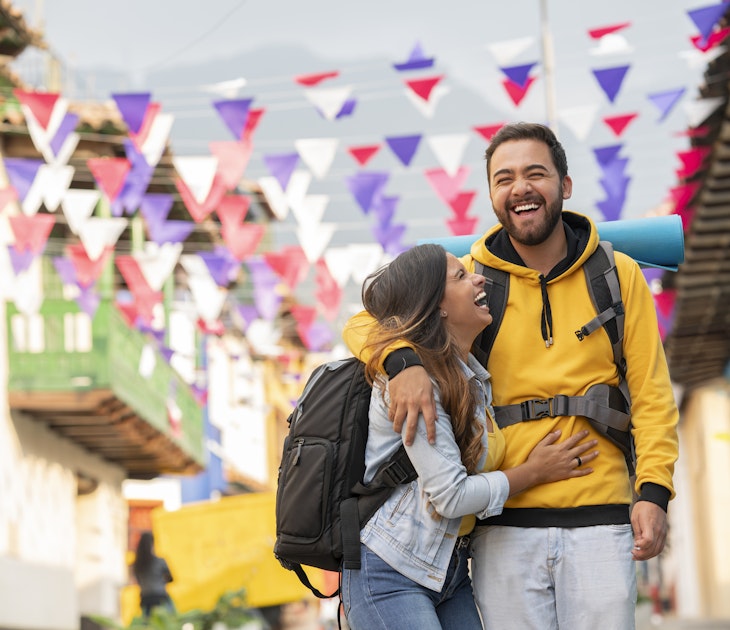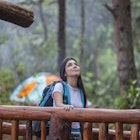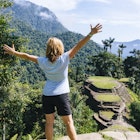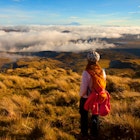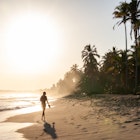A host of outdoor adventures await travelers visiting Santa Marta. Set right on the Caribbean Sea at the foot of the mighty Sierra Nevada, Colombia’s oldest Spanish city is a short jaunt from picturesque beaches, wetlands, verdant jungles, hiking and surfing.
Here are just a few of our favorite day trips.
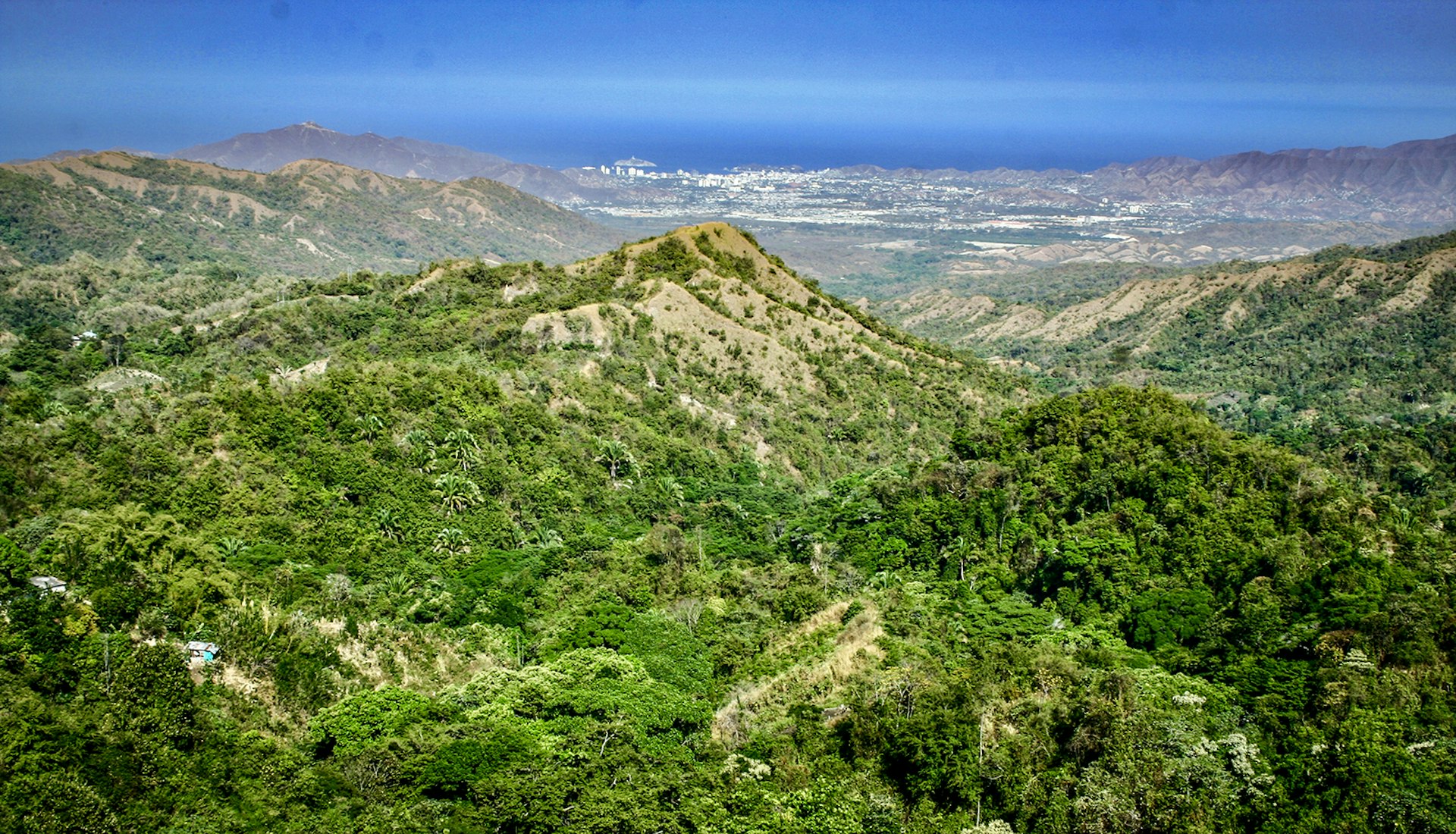
Connect with nature in Minca
If the intense tropical heat becomes overwhelming, escape to Minca, a tiny mountain village concealed in the foothills of the Sierra Nevada de Santa Marta. Surrounded by forested peaks teeming with wildlife (birders, take your binoculars), waterfalls, hiking trails, mountain biking and organic coffee, Minca is an ecological paradise with something fun for everyone.
Walk up the steep dirt road to Los Pinos, a viewpoint with sweeping vistas of the blue ocean and the Sierra. Alternatively, chill out in the icy rock pools at Cascada de Marinka or Pozo Azul, both an easy walk from town.
Go back in history and discover how coffee beans are processed at La Victoria, one of the biggest and oldest coffee haciendas in northern Colombia. The self-sustaining organic farm was founded in 1892 and still relies on machinery from that time. The tour takes approximately 40 minutes and includes a coffee tasting at the end.
Make it happen: Colectivos (taxi van) wait outside the ‘Cootrasminca’ office in the market in Santa Marta's center. The drive takes about 50 minutes.
Eat cacao in Paso del Mango
Named for the diverse variety of mango trees that grow here, Paso del Mango is much quieter and less touristy than Minca. Also located in the Sierra Nevada, but at a lower altitude, the village is a great alternative for outdoor enthusiasts. Besides birdwatching, hiking and swimming, you can experience firsthand how the ‘food of the gods’ is harvested at a family run, organic cacao farm; known informally as the "finca de cacao," it's the only cacao farm in town and locals will point you in the right direction. Don’t miss out on the chocolate facial that you can lick off later! The farm is open all year round and you don’t need to make a reservation.
The chocolate tour takes less than two hours, so you'll have time afterwards take a stroll five minutes uphill and explore the Caoba Natural Reserve. The reserve is situated on what used to be a large town belonging to the Tayrona indigenous people – 400 meters of stoned paths have since been discovered.
Make it happen: Catch a bus or taxi to the police station in Bonda, a small village on the outskirts of Santa Marta. From here, it’s another 20 minutes by mototaxi up to the farm.

Explore the water villages of Ciénaga Grande
Wedged between the Sierra Nevada and the Magdalena River is the country’s largest coastal wetlands, the Ciénaga Grande de Santa Marta. Coexisting with the swamp’s diverse species of flora and fauna is the only palofito (stilt house) community in Colombia. The three water villages are located on the periphery of the immense lagoon, and are home to fishermen and their families.
The biggest village, Nueva Venecia, home to some 2,100 people, recently opened up to tourism. Spending a day exploring the amphibious community offers a rare glimpse into a unique culture where the streets have no name, and boats and swimming are the only ways of connecting with neighbors and to life on terra firma.
Make it happen: Aventure Colombia and Birding Santa Marta (birdingsantamarta.com) both offer trips to Nueva Venecia.
Discover magic realism in Aracataca
Although you mightn’t imagine it, the hot, dusty town of Aracataca is where magic realism was born. Hidden among banana plantations, the town was Gabriel García Márquez’s inspiration for Macondo – a fictional village he brought to life in his book One Hundred Years of Solitude. Fans of the legendary novel will be blown away exploring his childhood home, now a Casa Museo. Each room contains surreal details related to the book, its characters and the writer's peculiar life growing up here with his grandparents. Besides the museum, you can visit his father’s telegraph office, the old train station and several other sites. Oh, and there are tons of yellow butterflies.
Make it happen: Buses frequently leave from the main bus terminal in Santa Marta. The journey takes about one and half hours.

Delight in a beach paradise in Tayrona
Exploring the lush, jungle-clad mountains and beaches of Tayrona National Park is a must-do for nature lovers. However, as one of Colombia’s most famous tourist destinations, it can get overcrowded. Dodge the masses heading to the very popular Cabo San Juan and spend an idle day (no hiking required) at Playa Cristal. The water here really is crystalline, and below the turquoise waves, coral reefs create an underwater paradise. Embraced by a hilly, dry tropical forest that races to meet the sea, the white-sand beach’s surroundings are truly gorgeous. If you avoid weekends and national holidays, you should have the beach more or less to yourself.
Make it happen: Enjoy a bumpy boat ride from Taganga or sign up for a tour. (Don’t forget your passport! You’ll need it to enter the park).
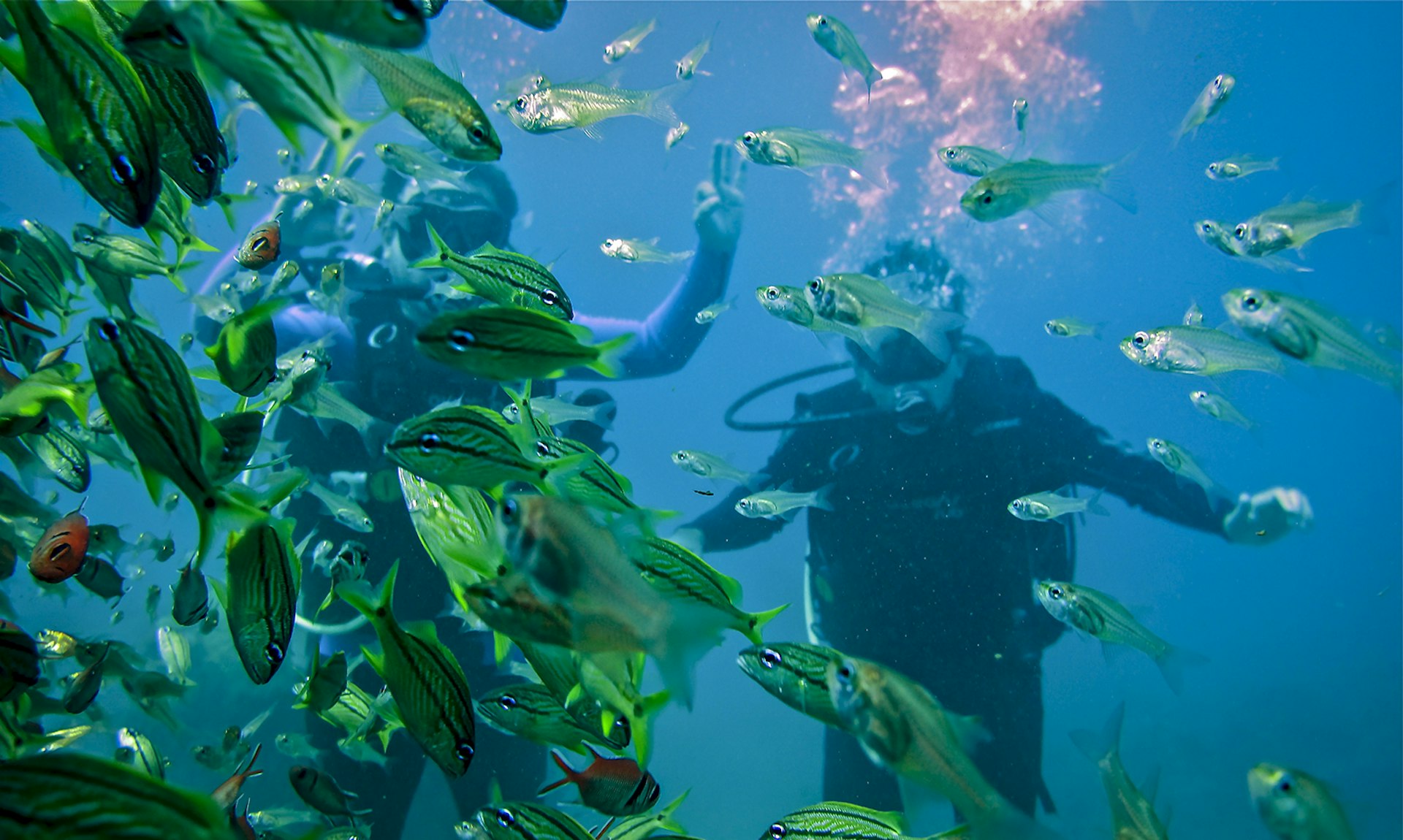
Experience (almost) zero gravity underwater
Tayrona National Park extends far beyond land – 30 square kilometers of sea to be exact. And since it’s highly unlikely you’ll make it to the moon, scuba diving is the next best thing to experiencing weightlessness. Less than 30 minutes from Santa Marta, beneath the park’s untamed, protected waters, you can dive in shipwrecks and caves, and between coral reefs. It’s a magical world full of marine biodiversity: from brightly colored fish, sponges and shy moray eels to squid, octopus, and if you’re really lucky, turtles and dolphins. If having a 15- to 20-meter wall of water above you sounds terrifying, you can still enjoy the underwater wonderland with a mask and snorkel.
Make it happen: There are plenty of dive centers around Santa Marta and Taganga who offer high quality (and great value) dive courses for beginners to advanced divers.
Chill out, catch some waves
Surfing the waves on Colombia’s Caribbean coast is a rush regardless of your skill level. Just beyond Tayrona’s eastern border, the coast line opens up and palm-strewn beaches stretch out before you. Framed by the tumbling jungles of the Sierra Nevada, it’s an impressive sight. Where the waves on the Colombian Pacific Coast are for intermediate to advanced surfers, everyone can enjoy the North coast. You'll find a popular beach break, great for beginners, where the Mendihuaca River flows into the sea, some 37 km from Santa Marta. Surf board rental and surf lessons can be booked at CasaGrande Surf and Costeño Beach Surf Camp.
Make it happen: Hop on a bus from the market heading to Tayrona Park. Tell the driver to let you off at either Casa Grande or Costeño Beach.

